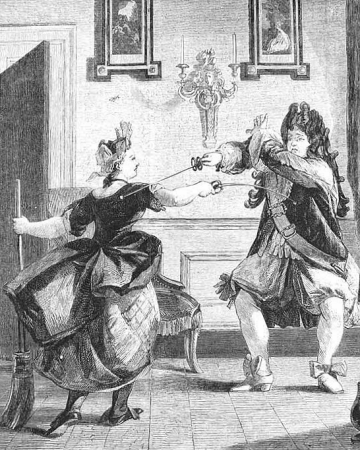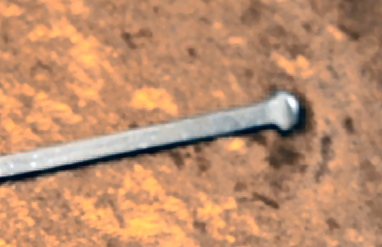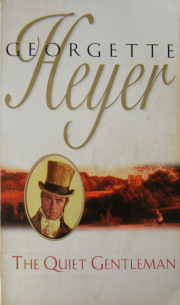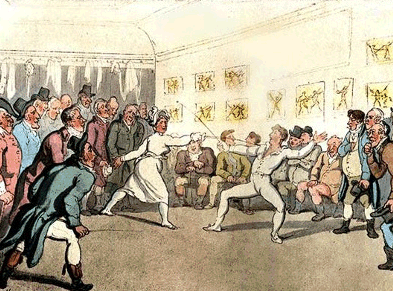The Origin - Six Inches of Steel
And the truth is – Georgette Heyer borrowed the button fell off the point idea as well! The origin of the dropped tip comes from 'Six Inches of Steel,' a Victorian short story published in Chambers’s Journal. b Here we read:
'Take off your mask: we need not always play like children, monsieur.'
I threw it off into the corner of the room, and we began. I was quite cool; she, evidently under the influence of some strong passion, with amazing energy. Therefore she lunged at me with all her force and skill, and I felt once, as the point of her foil glided down mine, that though the leather was there, the button at the end was gone.
'The button of your foil is off, mademoiselle.'
'But Julie'-
'Be guarded, monsieur; the foil has no button. I doubt if you shall live a month.’
And she attacked me with a fury that made me need every artifice she had taught me to ward off her thrusts. At last, it came carte over the arm; I parried badly, and the pointed blade ripped up my arm from wrist to shoulder.
The moment she saw the blood, she threw away the foil, and rushed towards me. I sank on to the couch fainting from loss of blood, with just strength enough to say: 'Break off the point, Julie dear,' and then swooned.
When I came to, my arm was bound up, and I heard her sob as I lay with my mind awake but my body motionless: 'Oh, my Arthur! My love! I have killed you! I have killed you, for whom I would have died! Oh, wretch that I am, he will die – he will die!'

'No – you will live – you must live to forgive me. It was not an accident – I meant to kill you, wretch that I am!'
I could only say: 'Don't cry, Julie, dear. What do they say? Where is the point? Give it me.'
She gave me the broken-off part of the foil. I saw it had been rubbed on some stone till it was as sharp as a needle.
When M. de Bonheur returned, be brought with him his visitor, who by good fortune happened to be an old comrade of his.
'Well, are you better now? How did it happen?'
'The point of the foil broke off, and the edge took me on the wrist as I lunged.'
'Bah! – Julie, you must have guarded very badly to do that. Where is the foil? – Yes; I see the point is broken off. Where is the point?'
'It must be about the room.'
The visitor looked at Julie, and said: 'It does not matter; it can be found by and by, when this gentleman has gone. He will be strong enough in an hour to go – meanwhile, let him rest a little; Julie can take care of him.'
'Ah, Julie, but it was an awkward guard of yours, and the foil too must have been bad; I shall have to complain to the maker.'



